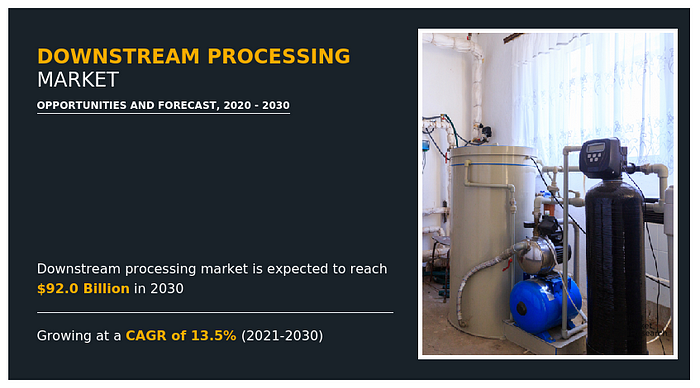Downstream processing refers to the various steps involved in purifying and refining a biologic or chemical product after it has been produced by fermentation, cell culture, or chemical synthesis.
In other words, downstream processing is the set of procedures that take place after the raw material is harvested or synthesized, with the goal of separating and purifying the desired product from other molecules and contaminants.
The process typically involves a series of steps such as filtration, centrifugation, chromatography, and other purification methods to isolate and concentrate the target molecule, while removing impurities such as cells, proteins, and other unwanted substances.
Once the product has been purified, it may be formulated into a final product, such as a drug, a food ingredient, or a specialty chemical, depending on the application.
Downstream processing typically involves several stages or segments, including:
- Harvesting: The first step involves harvesting the cells, microorganisms or raw materials that contain the desired product.
- Clarification: The harvested material is typically a complex mixture of cells, proteins, and other impurities. The next step involves separating and removing these impurities from the desired product.
- Concentration: The product is often present in low quantities and may need to be concentrated before further purification. This can be achieved using methods such as filtration, ultrafiltration, or evaporation.
- Purification: This is the most critical step in downstream processing, where the desired product is isolated and purified from other molecules and contaminants. Purification methods can include chromatography, ion exchange, and other techniques.
- Formulation: The final step involves formulating the purified product into a final product suitable for its intended use. This can include adding stabilizers, preservatives, or other excipients.
Each of these segments is crucial in ensuring the quality and purity of the final product, and the specific techniques used will depend on the nature of the product and the intended application.

One of the most important factors that impact downstream processing is the nature of the product being purified. Some key factors that can affect the downstream processing of a biologic or chemical product include:
- Size and complexity: The size and complexity of the product can impact the effectiveness of different purification methods. Large, complex molecules may require multiple purification steps and techniques to achieve high purity.
- Solubility: The solubility of the product in different solvents can affect the choice of purification techniques. For example, hydrophobic molecules may require different purification methods compared to hydrophilic molecules.
- Stability: The stability of the product can be a key factor in the choice of processing conditions, such as pH, temperature, and pressure. Some products may be sensitive to certain processing conditions and require specialized techniques to maintain their stability.
- Contaminants: The type and level of contaminants present in the starting material can affect downstream processing. For example, high levels of impurities may require more extensive purification steps to achieve the desired level of purity.
- Regulatory requirements: The regulatory requirements for the final product can also impact the downstream processing. For example, pharmaceutical products may need to meet strict regulatory standards for purity, potency, and safety.
By considering these factors, downstream processing can be optimized to achieve high yields, purity, and efficiency in the purification of a biologic or chemical product.

